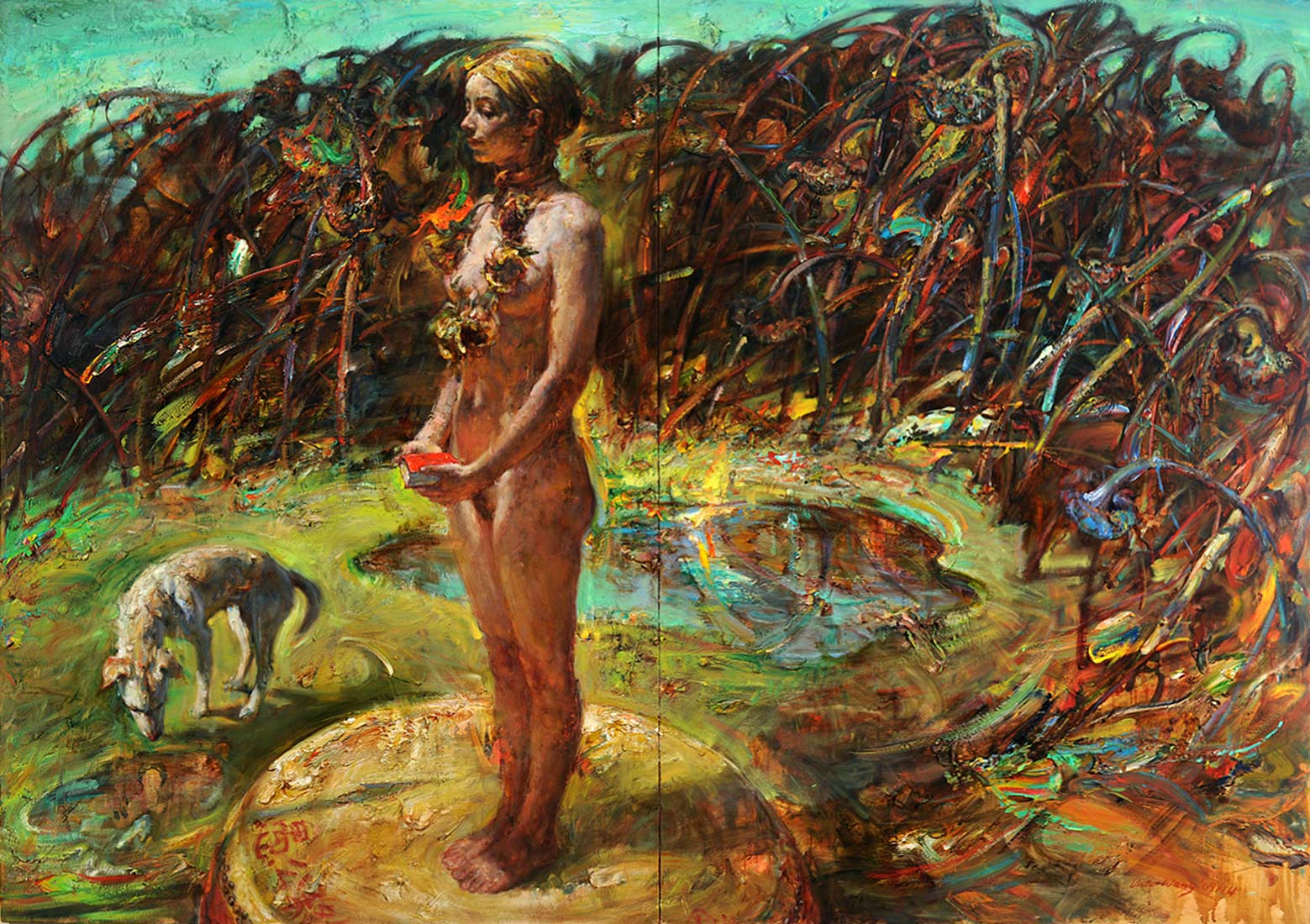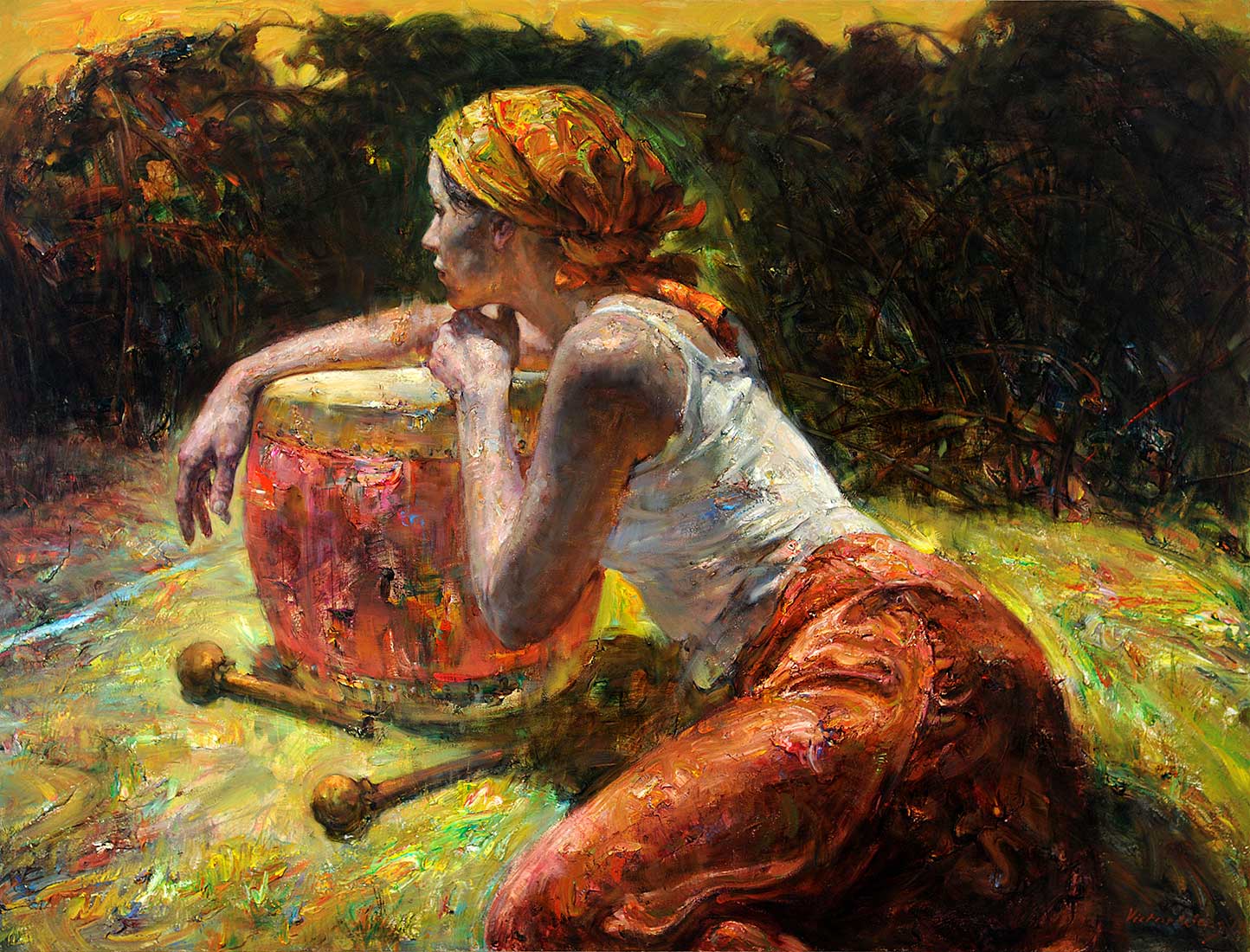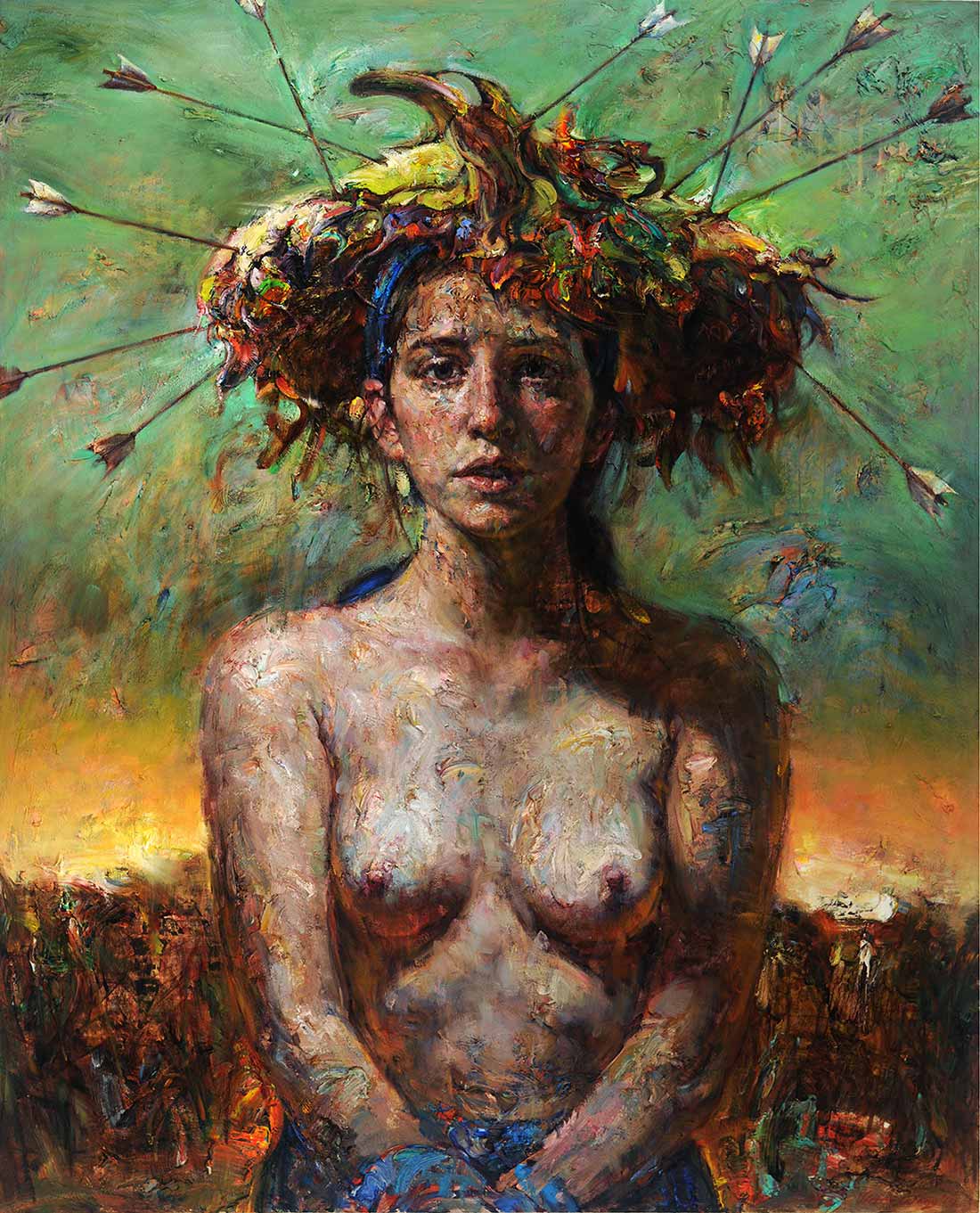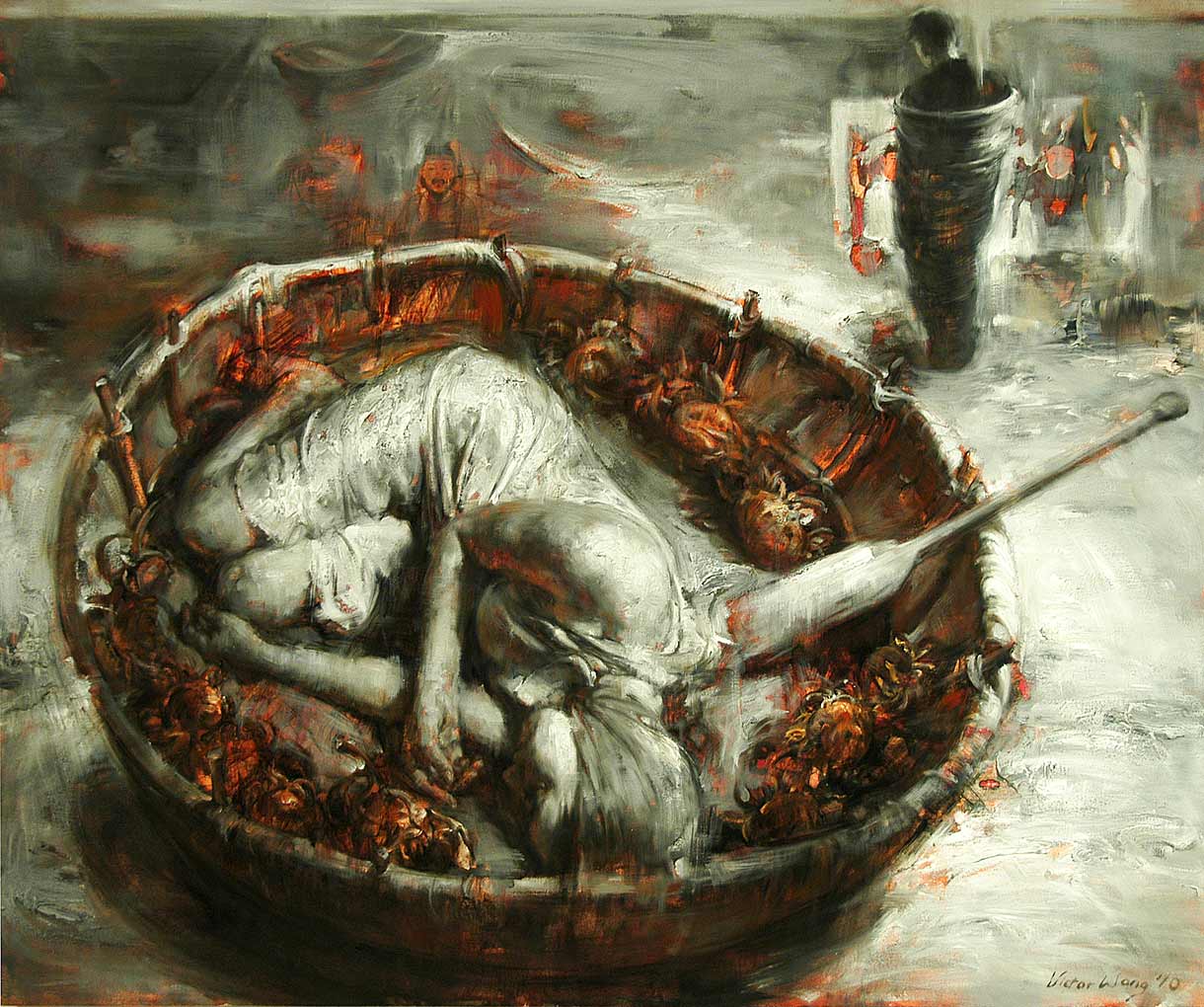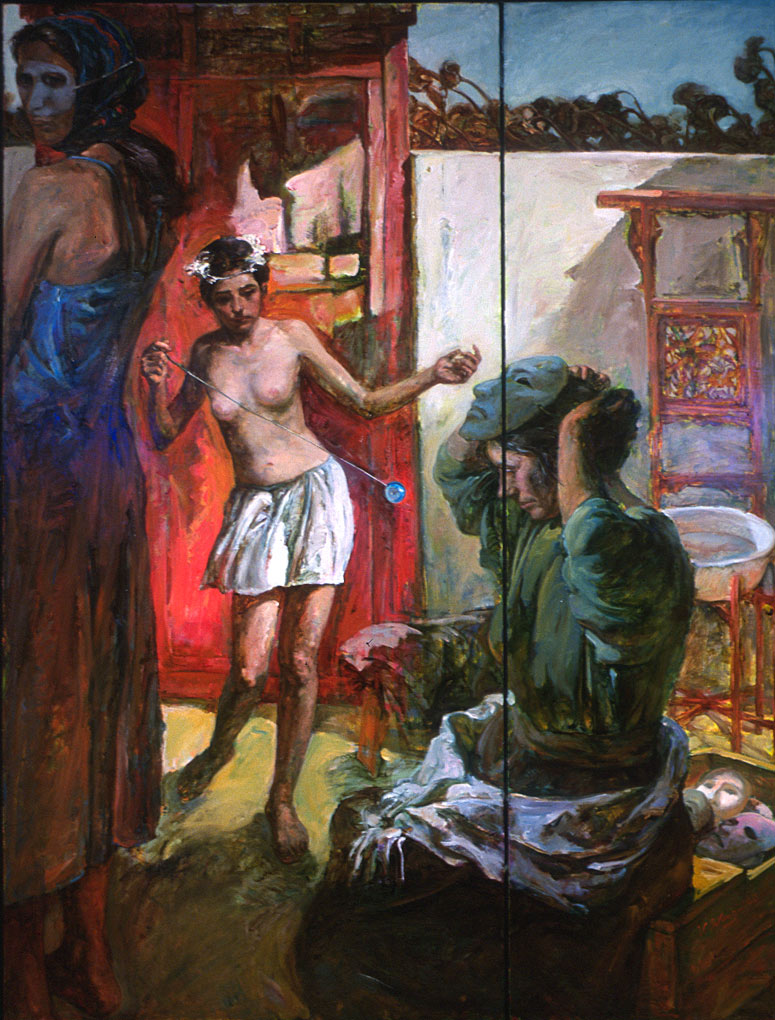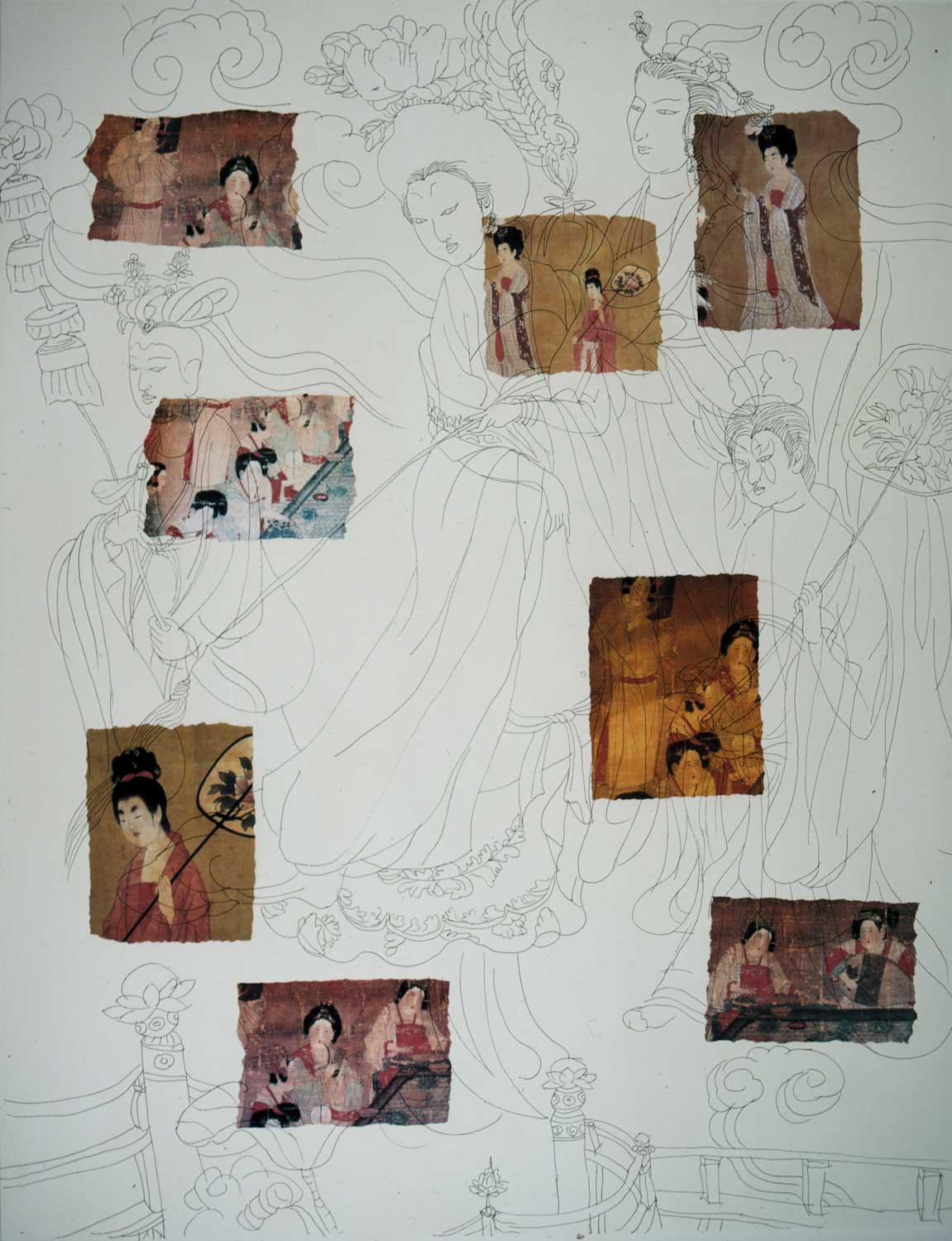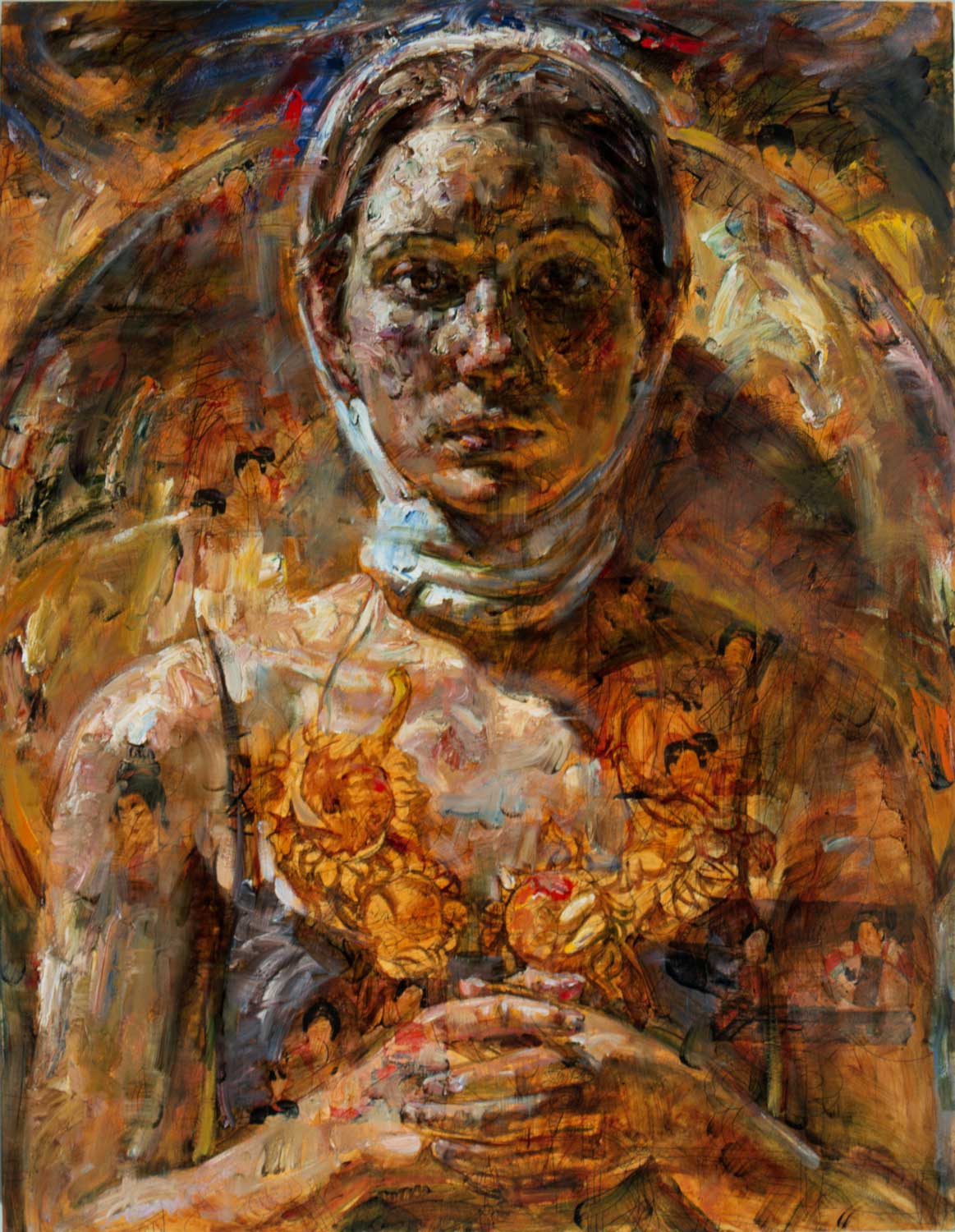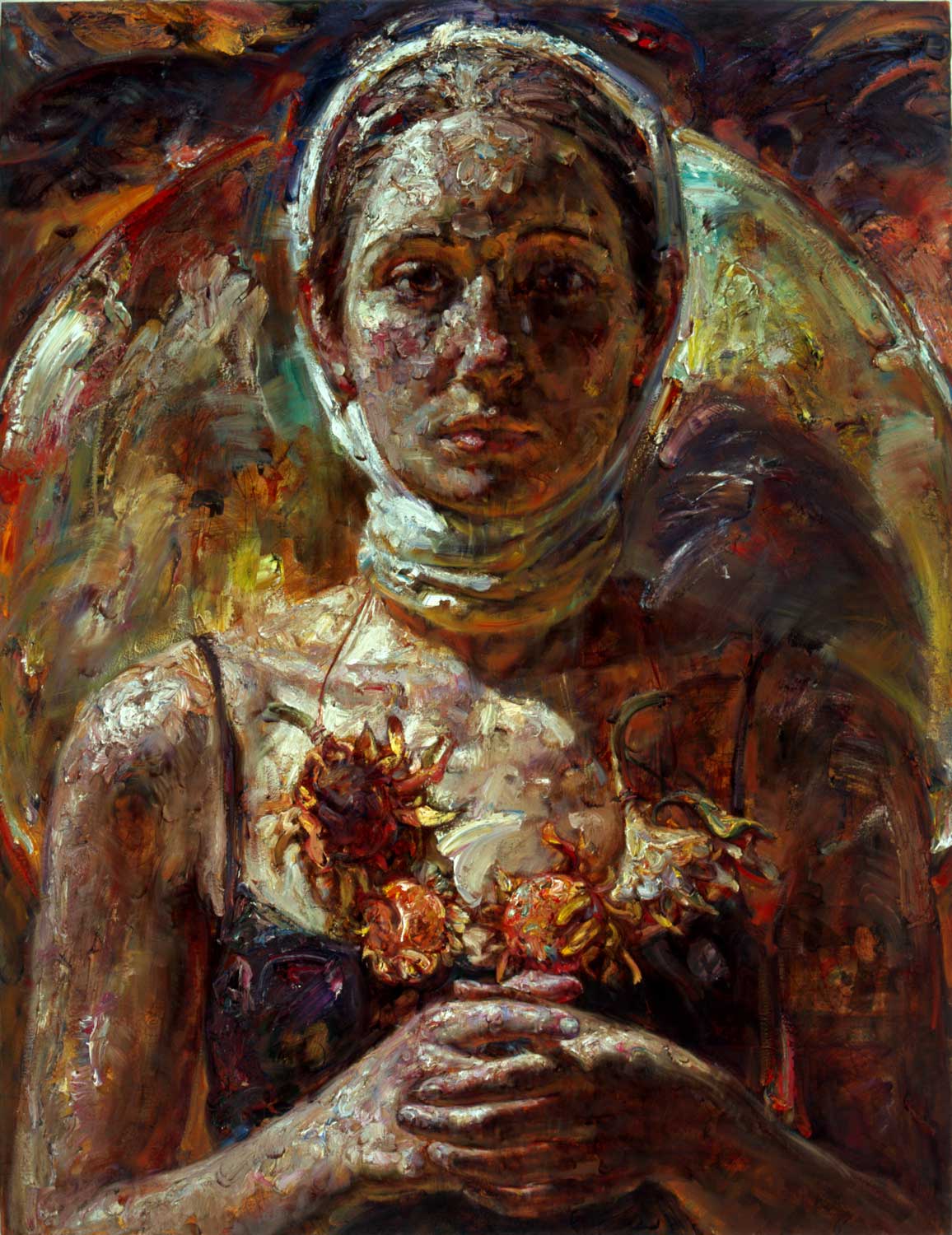Fondness and Fright
The Sunflower as a Symbol in Art
The Sunflower as a Symbol in Art
Growing up during the Chinese Cultural Revolution led to dreams and memories that are the foundation of this artist's mixed media portraits.
BY VICTOR WANG
I was born in a small city in northeastern China. My father was a stage actor and my mother was a librarian. Among five siblings, I was the youngest. In my childhood memories, I recall my brothers and me playing hide-and-seek in the sunflower fields behind my home, and then sneaking away from my father to learn how to smoke a cigarette. I started learning to draw in the third grade. When the Cultural Revolution caused schools to be shut down across China I had nothing to do, and began to copy political cartoons.
After graduating from high school, I was sent to a “labor camp,” which is based upon Chairman Mao’s idea of “reeducation of the farmer.”
After graduating from high school, I was sent to a “labor camp,” which is based upon Chairman Mao’s idea of “reeducation of the farmer.”
After two years and eight months of hard labor, I came back to the city and passed the exam for acceptance into the Luxun Academy of Fine Arts in China. I studied in the oil painting department after the Cultural Revolution ended. In 1983, following my graduation, I was hired as an assistant professor at the academy.
In 1987, the academy sent me to the School of Art and Design at Illinois University in Champaign, as a visiting scholar. In 1989, the Tiananmen Square incident happened, and because of the tension in that political situation, I decided to stay in the United States.
In 1987, the academy sent me to the School of Art and Design at Illinois University in Champaign, as a visiting scholar. In 1989, the Tiananmen Square incident happened, and because of the tension in that political situation, I decided to stay in the United States.
The images portrayed in my art are evoked by my childhood memories and past experiences. With the passage of time, the things that have happened in the past are progressively vanishing from my memory. Recently, however, I have dreamed often of times long ago when I was a child or a teenager.
In these dreams I cannot remember the context of events, but certain marks, signs, feelings, and locations are clear and meaningful. When I wake up, I try to capture as many images as I can, realizing that meaningful memories never seem to completely vanish. An artist often tells one story repeatedly; however, my story is created from the images and feelings from my past experiences, representing my life journey through my art journey.
In these dreams I cannot remember the context of events, but certain marks, signs, feelings, and locations are clear and meaningful. When I wake up, I try to capture as many images as I can, realizing that meaningful memories never seem to completely vanish. An artist often tells one story repeatedly; however, my story is created from the images and feelings from my past experiences, representing my life journey through my art journey.
The human figures in my paintings serve as vehicles to convey human experiences, representing the emotional tension and psychological drama of life’s turning points. Nostalgia, harmony, passion, agony, sadness, and pleasure are all revealed in my new body of work within the last decade.
The blend of luminous color and buttery texture evokes the enigmatic environment where these moments of meditation originate. I have interwoven the sunflower — a prominent symbol throughout my life, embodying both sorrow and joy — into my paintings. I am deeply inspired by events in my past — growing up during a politically turbulent time period, immigrating to the United States, starting over from nothing, attending art school, and finally finding success as an artist and art instructor. One common thread throughout my past that can be seen echoed in nearly all my paintings is the sunflower.
Many of my models wear necklaces or crowns made of sunflowers, or hold sunflower bouquets, or pose with sunflowers scattered throughout a scene. For me, these flowers recall memories both fond and harrowing. Especially during the Cultural Revolution, the sunflower became a political symbol. Because sunflowers follow the sun, they were used to symbolize the Chinese people and the sun was used to symbolize Mao, thereby expressing that the people must follow Mao.
On Inspiration and Technique: Manipulating Light for Theatrical Effects
Incorporating the Tang and Song Dynasty collage images in the background of my works creates the signature of my heritage. My works have been strongly influenced by Titian, Rembrandt, Velàzquez, and Anselm Kiefer. I am also influenced by the exaggerated way Auguste Rodin used clay to model figures.
Sculpture is very different from painting — with the expression and body language in the muscles and the form, one can really associate how inner emotions relate to the surface. I have tried to treat my paint on canvas as the equivalent of a sculptor’s clay to build up form on canvas. The thickness of the paint evokes a sculpture-like physicality and multilevel quality.
I build up three dimensionality with color, which allows creating the effect of shallow relief rather than just creating the illusion of three dimensionality.
Sculpture is very different from painting — with the expression and body language in the muscles and the form, one can really associate how inner emotions relate to the surface. I have tried to treat my paint on canvas as the equivalent of a sculptor’s clay to build up form on canvas. The thickness of the paint evokes a sculpture-like physicality and multilevel quality.
I build up three dimensionality with color, which allows creating the effect of shallow relief rather than just creating the illusion of three dimensionality.
The light areas of my composition are thicker than the shadowy areas. When the light areas are thicker, it appears as if they are being struck with light. In the shadowy and dark areas, however, I still keep a thinner and more transparent application to be able to let the collage images come through.
Light and dark contrast are important elements in my painting, similar to the chiaroscuro painting technique. I have a deeply evocative childhood experience where I went to the theater to watch my dad acting on stage. I always enjoyed the stage lighting and the way it created a more interesting drama when my father moved through the light. I loved the intensity. I therefore like my paintings to maintain that theatrical quality. Playing with artificial light allows me to manipulate light with lost and found shadows, making the painting more interesting and dramatic.
Light and dark contrast are important elements in my painting, similar to the chiaroscuro painting technique. I have a deeply evocative childhood experience where I went to the theater to watch my dad acting on stage. I always enjoyed the stage lighting and the way it created a more interesting drama when my father moved through the light. I loved the intensity. I therefore like my paintings to maintain that theatrical quality. Playing with artificial light allows me to manipulate light with lost and found shadows, making the painting more interesting and dramatic.
A Step-by-Step of My Painting Process
Step 1.
First, I apply acrylic matte gel medium glued onto the digital images of Tang Dynasty paintings printed on acid free paper. I then add line drawings with permanent marker over it and seal the surface with acrylic matte gel medium.
First, I apply acrylic matte gel medium glued onto the digital images of Tang Dynasty paintings printed on acid free paper. I then add line drawings with permanent marker over it and seal the surface with acrylic matte gel medium.
Step 2.
I then tone the canvas with transparent burnt sienna oil paint. On top of this, I sketch charcoal line drawings, keeping the undercollage still visible.
I then tone the canvas with transparent burnt sienna oil paint. On top of this, I sketch charcoal line drawings, keeping the undercollage still visible.
Step 3.
At this point, I have built up shadowy areas with dark brown colors to give a sense of dark tone in the composition.
At this point, I have built up shadowy areas with dark brown colors to give a sense of dark tone in the composition.
Step 4.
In this step, I add chunky flake white paint to all highlighted areas. Meanwhile, I give more definition to shadow shapes with dark flesh colors and work more richly toned dark shades into the background. At this stage, the undercollage is still visible.
In this step, I add chunky flake white paint to all highlighted areas. Meanwhile, I give more definition to shadow shapes with dark flesh colors and work more richly toned dark shades into the background. At this stage, the undercollage is still visible.
Step 5.
Next I start to add different shades to highlights and shadows while layering more paint in the face, skin, and fabric areas. I enrich the background with bold shots of color and streaks of darkness.
Next I start to add different shades to highlights and shadows while layering more paint in the face, skin, and fabric areas. I enrich the background with bold shots of color and streaks of darkness.
Step 6.
Despite my thick application of paint, I tweak any nuances and add subtle highlights and shadows. I add further layers across the canvas in different styles. The face receives many short strokes and I predominantly mix my wet-in-wet directly onto the canvas. At this point, I have filled in the sunflowers with color and texture and concealed nearly all evidence of the undercollage. Yet, the viewer can still see hidden figures here and there.
Despite my thick application of paint, I tweak any nuances and add subtle highlights and shadows. I add further layers across the canvas in different styles. The face receives many short strokes and I predominantly mix my wet-in-wet directly onto the canvas. At this point, I have filled in the sunflowers with color and texture and concealed nearly all evidence of the undercollage. Yet, the viewer can still see hidden figures here and there.
Step 7.
More paint is added to all areas to lighten and warm the skin tones and background, and I work on the subtleties and transitions. I then glaze one more layer of transparent color on shadowy areas. All areas receive thick layers of paint, especially lighted areas, which I prefer to be thicker and heavier than the shadowed areas to imitate the effects of shallow relief.
More paint is added to all areas to lighten and warm the skin tones and background, and I work on the subtleties and transitions. I then glaze one more layer of transparent color on shadowy areas. All areas receive thick layers of paint, especially lighted areas, which I prefer to be thicker and heavier than the shadowed areas to imitate the effects of shallow relief.
Step 8.
For the final layer, I smooth out some of the bolder chunks of color to unify the piece and make each section more harmonious with the rest, including sections of the face and background.
For the final layer, I smooth out some of the bolder chunks of color to unify the piece and make each section more harmonious with the rest, including sections of the face and background.
ABOUT THE AUTHOR
Victor Wang grew up in northern China and graduated with a BFA from the Lu Xun Academy of Fine Arts, one of three top art institutes in China. After graduation he taught there for more than four years, after which he was sent to the University of Illinois at Urbana-Champaign as a visiting scholar. He earned his MFA in Fontbonne University.
Wang currently lives in St. Louis, where he teaches painting, drawing, and graduate critique classes as a full professor at Fontbonne University. He has exhibited widely across the country and internationally, and has won various awards for excellence, including awards for both painting and art instruction. His work has been shown nationally and internationally.
Wang currently lives in St. Louis, where he teaches painting, drawing, and graduate critique classes as a full professor at Fontbonne University. He has exhibited widely across the country and internationally, and has won various awards for excellence, including awards for both painting and art instruction. His work has been shown nationally and internationally.
Artists On Art magazine ● July / August 2018 ● www.ArtistsOnArt.com

